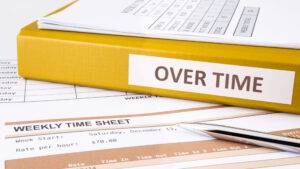
The 20% QBI deduction is only allowed for qualified trade or business income. The bothersome question in the whole year since §199A was enacted was if and when a rental activity is a trade or business. In Notice 2019-7, the IRS proposes a revenue procedure (now designated as Rev. Proc. 2019-xx) that will provide a safe harbor for determining if a rental activity is a trade or business for purposes of the §199A deduction.
Safe harbor. To use the safe harbor the taxpayer is required to:
- Maintain separate books and records for each rental activity (or the combined enterprise if aggregated together),
- Demonstrate that 250 hours or more of “rental services” per year for the activity (or combined enterprise) were performed by the owners, employees or independent contractors with respect to the enterprise, and
- Maintain contemporaneous records, including time reports or similar documents, regarding (1) hours of all services performed, (2) description of all services performed, (3) dates on which such services are performed, and (4) who performed the services. For these purposes, rental services include advertising to rent, negotiating and executing leases, verifying tenant applications, collection of rent, daily operation and maintenance, management of the real estate, purchase of materials, and supervision of employees and independent contractors.
Exceptions. Real estate used by the taxpayer (including an owner or beneficiary of a relevant pass-through entity (RPE) as a residence for any part of the year under §280A is not eligible for this safe harbor. Property leased under a triple net lease (including the owner or beneficiary of an RPE) is not eligible for the safe harbor. A triple net lease includes a lease agreement that requires the tenant or lessee to pay taxes, fees, and insurance, and to be responsible for maintenance activities for a property in addition to rent and utilities. It also includes a lease agreement that requires the tenant or lessee to pay an allocable share of the taxes, fees, and insurance, and maintenance (CAMs) related to the portion of the property rented.
Aggregation. The taxpayer may choose to aggregate commonly owned rentals into one enterprise, perhaps making it easier to meet the 250-hour test (or the UBIA limit for high income individuals). However the regulations do not allow commercial rentals and residential rentals to be aggregated (§1.199A-4(d), ex 17).
Statement required. A taxpayer or RPE must include a statement attached to the return on which it claims the §199A deduction or passes through §199A information that the requirements in this revenue procedure have been satisfied. The statement must be signed by the taxpayer, or an authorized representative of an eligible taxpayer or RPE who has personal knowledge of the facts, which states: “Under penalties of perjury, I (we) declare that I (we) have examined the statement, and, to the best of my (our) knowledge and belief, the statement contains all the relevant facts relating to the revenue procedure, and such facts are true, correct, and complete.”
Forms 1099. The regulations that were released concurrently with the new revenue procedure require that if you treat the rental activity as a trade or business, the taxpayer must file required Forms 1099 (see page 21 of the Preamble to the final §199A regs.)
Examples.
- Sharon owns a four-plex in Sunnyvale. In 2018, she spent 120 hours advertising for tenants, interviewing prospective tenants and supervising repairs and improvements. In addition, a gardener spent 80 hours maintaining the yard and a cleaning and painting service spent 100 hours on tenant turnover. If Sharon keeps separate books and records on her rental and contemporaneous time records, her rental is a trade or business for 2018.
- In the alternative, Sharon has not raised the rent she charges her tenants in ten years. Thus, she has no turnover expenses. Her tenants do all gardening, repairs and maintenance themselves in extreme gratitude for their low rent in an expensive area. Rental services on the four-plex do not exceed 250 hours and thus the rental income is not from a qualified trade or business under this safe harbor. Sharon’s net rental income does not qualify for the QBI deduction.
- Vern owns four single family rentals in Texas. The properties are managed. In 2018, his property manager spent 120 hours managing tenant turnover, collecting rents, and supervising repairs and improvements. A gardener spent 120 hours maintaining landscaping and sprinklers at the four properties. A maintenance service spent 120 hours on routine maintenance and a painter spent 100 hours repainting two of the properties. If Vern elects to aggregate the properties, he’ll meet the 250-hour requirement in the safe harbor even though he didn’t work on the properties himself. The separate books and records and the contemporaneous time records required by the Rev. Proc. are provided to Vern by his property manager. Vern’s rental enterprise (the aggregated four rental houses) is a trade or business for 2018.
- In the alternative, Vern does not make the aggregation election, and since each property does not require 250 hours of rental services, Vern’s rental income is not from a qualified trade or business under this safe harbor. If Vern didn’t know about or understand the aggregation election, for 2018 only, he may make the election on an amended return.
- Brosi LLC owns an office building and an apartment building in Palo Alto. Both are managed. As long as more than 250 hours of services are provided by the management company, and the contractors that it hires, for each building, the safe harbor applies and each rental will be treated as a trade or business for purposes of §199A. Brosi LLC cannot aggregate the two rentals, as one is commercial and one is residential, so it must meet the 250-hour test for each rental.
Recent Stories
Next Up...
- |
- TaxByte
- |
- TaxByte






